

Vol. 38 (Nº 46) Year 2017. Page 9
Yerkezhan MOLDAKENOVA 1; Kasiya KIRDASINOVA 2; Baurzhan TOLYSBAYEV 3; Lyailya MUTALIУEVA 4; Laura BAITENOVA 5; Talgat DEMESSINOV 6; Ruslan KONUSPAYEV 7
Received: 14/09/2017 • Approved: 25/09/2017
ABSTRACT: In the Republic of Kazakhstan the development of agribusiness is one of the most important industry of the state economy, which has its own historical roots and traditions, in connection with which it is possible to trace the patterns and features of the functioning of the national economy. This article presents a literature review of Kazakhstani and foreign authors, who conducted the study of socio-economic development of the national economy, including the agricultural sector in various aspects. The article explores one of the topical issues of Kazakhstan's economy - innovative development of the republic's agribusiness complex. In article shown the characteristic features of management processes in the area of agricultural development. The authors of the article conducted a study of the food market in Kazakhstan as a component of the agro-industrial complex, conducted an analysis of the current state of the industry, taking into account the integration processes taking place in the foreign economic sphere. As a result of the studies, the theoretical and methodological aspects of research into the development of the agribusiness complex are systematized, on the basis of which conclusions are drawn. |
RESUMEN: En la República de Kazajstán el desarrollo del agronegocio es una de las industrias más importantes de la economía estatal, que tiene sus propias raíces históricas y tradiciones, en relación con las cuales es posible trazar los patrones y características del funcionamiento de la economía nacional. Este artículo presenta una revisión de literatura de los autores de Kazajstán y extranjeros, que llevaron a cabo el estudio del desarrollo socioeconómico de la economía nacional, incluyendo el sector agrícola en varios aspectos. El artículo explora uno de los temas tópicos de la economía de Kazajstán-desarrollo innovador del complejo agroindustrial de la República. En el artículo se muestran los rasgos característicos de los procesos de gestión en el ámbito del desarrollo agrícola. Los autores del artículo realizaron un estudio del mercado de alimentos en Kazajstán como componente del complejo agroindustrial, realizaron un análisis del estado actual de la industria, teniendo en cuenta los procesos de integración que tienen lugar en la economía exterior esfera. Como resultado de los estudios, se sistematizan los aspectos teóricos y metodológicos de la investigación en el desarrollo del complejo agroindustrial, basándose en qué conclusiones se elaboran. |
Since the proclamation of independence of the republic, as in the entire economy of the country, significant structural changes have taken place in the agro-industrial complex (AIC). After abandoning the centralized planned economy, a set of measures was implemented that aimed at radical reform of the industry.
In general, the political outcome of the reform was the transformation of state property into a private one, as well as the creation of a legal basis for a market economy. Economic consequences were the changes in production and land relations, liberalization of pricing, credit system, creation of a competitive market infrastructure.
The development of Kazakhstan's AIC has shown quite positive results in recent years, but as external threats increase, domestic risks and emerging prospects for the world agro-food market continue to exist, there is a need to optimize state support measures, stimulate integration and cooperation processes in agricultural production, diversify production in accordance with nature climatic and socio-economic factors.
In the AIC of Kazakhstan, in particular, in agricultural production in recent years, there has been an increase in basic indicators, while changes in the quality of the food market are also taking place under the influence of the trends in the world food market.
At the same time, despite some stabilization of the situation in the agroindustrial complex, a number of problems of the current period remain in the industry. The logic of further economic transformations in the agrarian sphere requires a transition to a qualitatively new level of growth.
Analysis of the publications of the AIC management in modern socio-economic conditions has shown that innovative approaches in management activities in different countries are quite relevant for conducting research work.
Domestic and foreign scientific literature reflects the key directions of the development of the national economy in the system of modern approaches to the management of the industry. The strategic priorities of structuring and modernizing the national economy on the basis of agricultural development are undoubtedly always of interest for research.
The authors have studied foreign experience and methodological bases for researching the development strategy of important economic sectors of the economy, integration processes, long-term dynamics of the development of the agro-industrial complex; Analytical assessment of the practice of legal regulation of rural development as a form of employment; problems of development of agriculture and food market and safety in researches of foreign scientists are revealed:Slepneva L.P., Novakovskaya O.A.(2006), Kozyreva A.M. (2010), Roshka T.B., Kulakova L.N., Korol A.G. (2014), Karkh D.A., Gayanova V.M., Aimel F. (2015), Kaziakhmedov G.M., Kaziakhmedova D.G., Tatarinov А.V., Shishkov G.B., Timushev А.А.. (2015), Sаlakhutdinova R.R. (2016), Gyiazov A.T. (2016), Ulezko А.V., Babin D.I. (2016), Buzdualov I. (2017), Samygin D.Y., Baryshnikova N.G., Mizyurkina L.A. (2017) and other.
And also in the works of russian scientists: Saparbayev A. (2017), Narynbayeva А.S., Mels А.А. (2016), Temirbekova A.B. (2016), Kulanova D.А., Arebayeva А.N. (2016), Temirbekova А.Т., Uskelenova А.Т. (2012), Rakhimzhanova А.Zh. (2011) and in the works of other authors reflected theoretical problems of the national economy, the basis for the unification of methods of state support of the agrarian market in the conditions of the Eurasian Economic Union; economic and mathematical models of optimization of technological and logistical flows during the transportation of grain products; shows the effective implementation of the state's resource potential for optimizing the production of competitive products and food, increasing the export of food products.
Despite the research conducted by economists in the context of theoretical and methodological aspects, studying the problems of competitiveness of national economies is insufficiently studied and creates ample opportunities for further research.
All this has determined and determined the research of innovative approaches in the management of the agro-industrial complex.
In Kazakhstan at this moment, one of the most effective method of supporting the development of the agro-industrial complex is subsidizing the industry.
Subsidies from the state are directed to help in the purchase of breeding animals, to conduct breeding work and reduce the cost of production of livestock products.
The volume of state support in 2015 increased by 3 times in comparison with 2011.
Subsidies covered 6% of the total volume of beef production. At the same time, 70% of beef enterprises are not subsidized.
The state subsidizes 4.7% of milk production. At the same time, 80% of the total milk production falls on personal subsidiary farms.
In 2015, 248 foci of dangerous infectious diseases were recorded, out of which it was forbidden to export livestock products to a number of oblasts.
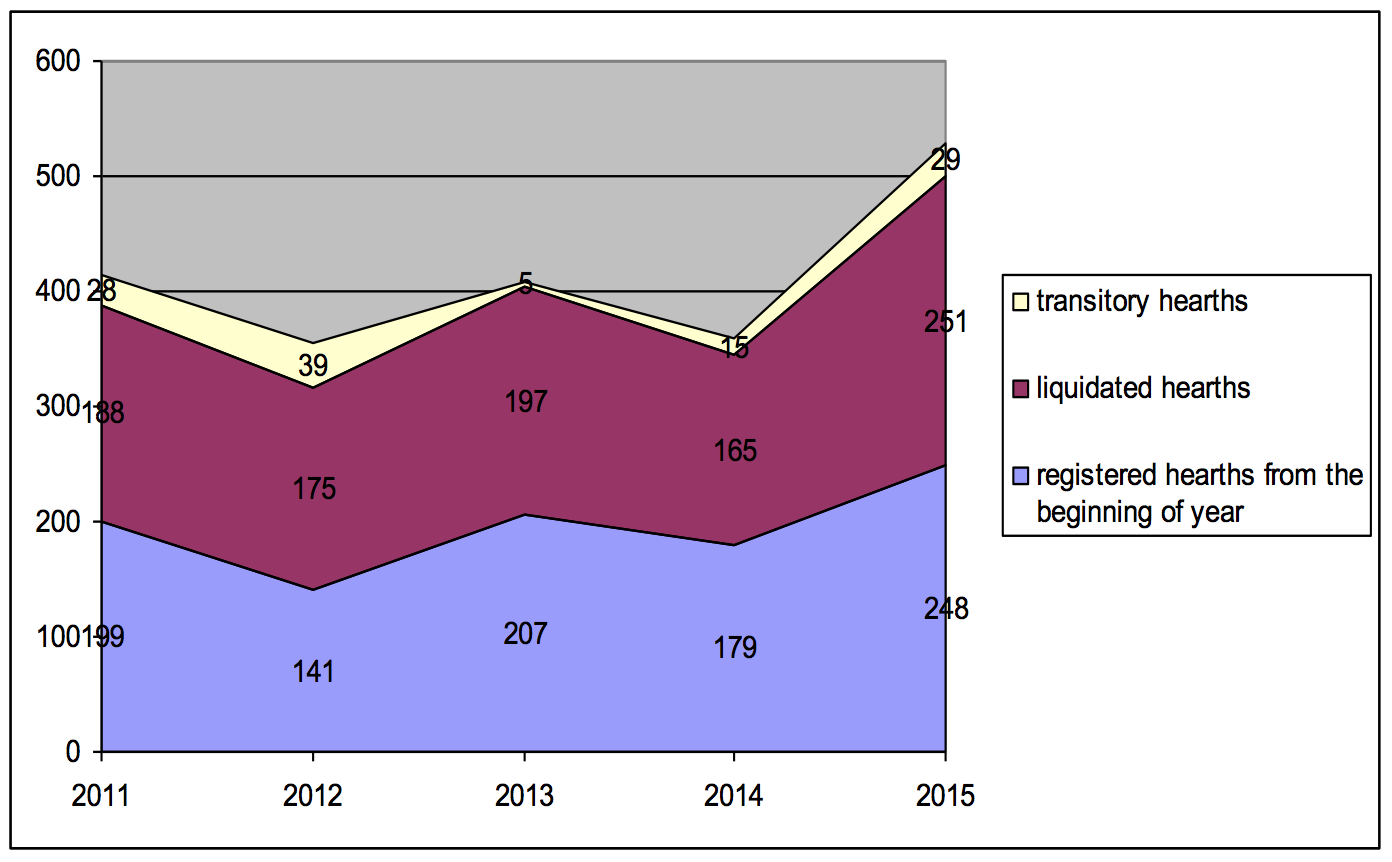
Diagram 1. Epizootic situation for especially dangerous animal diseases (number of cases)
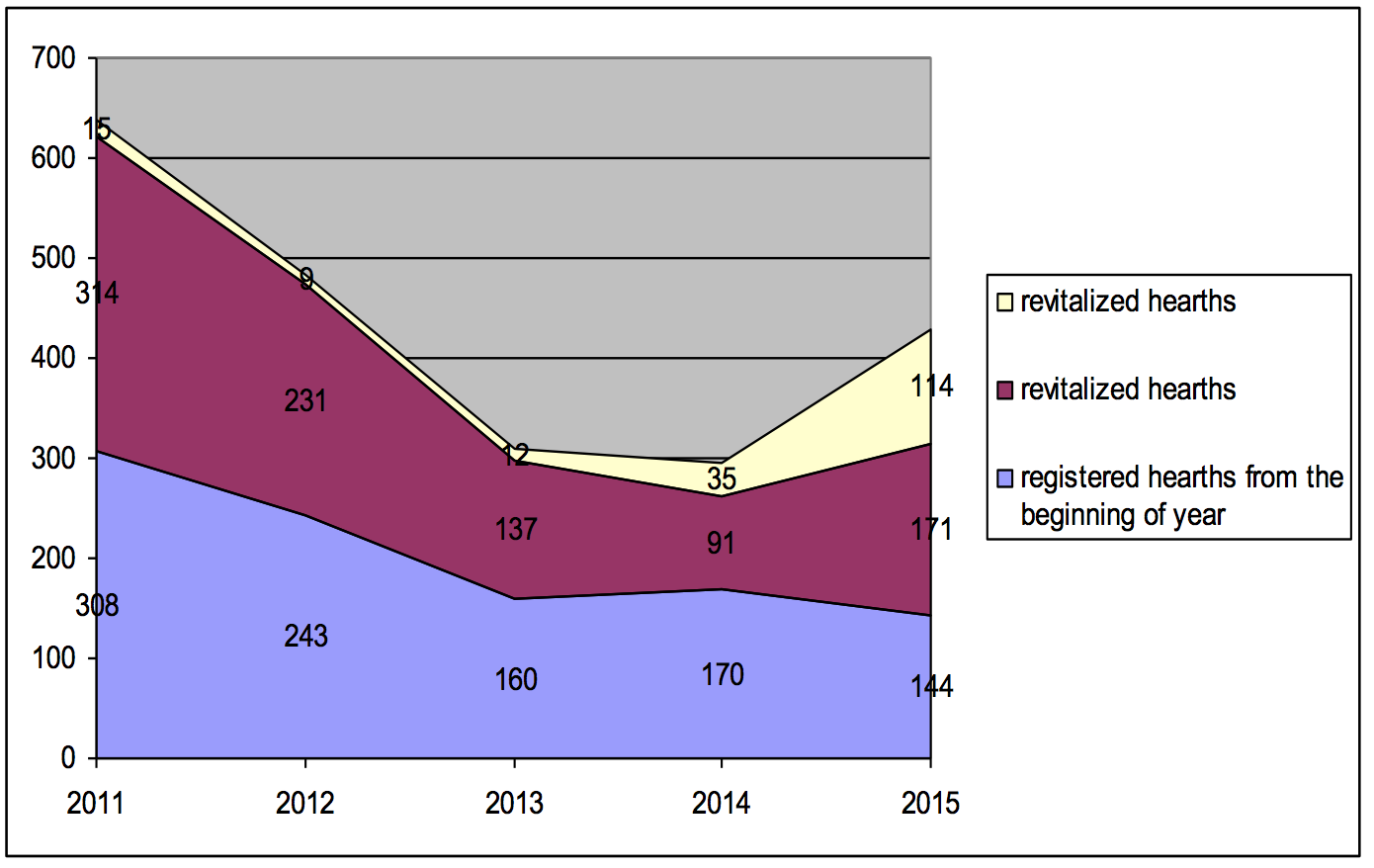
Diagram 2. Epizootic situation of chronic animal diseases (number of events)
In the livestock sector there are the following problems:
State support in the form of subsidies covers from 20% to 80% of all costs for construction and installation works and technological equipment in 19 directions. 2,759 subjects of the agro-industrial complex received state support in the form of grants totaling 19.1 billion tenge, and the amount of attracted investments is 67.8 billion tenge.
The livestock sector accounts for 55% of all attracted investments (37.6 billion tenge), crop production accounts for 35%, and agricultural products processing 10%. Over the past two years, there was an underfunding of 35.4 billion tenge of state support.
The interest rate on credit / leasing contracts is reduced by the tool of subsidizing rates of interest on loans of subjects of the agro-industrial complex, leasing of agricultural machinery and animals, technological equipment: for replenishment of working capital, purchase of basic resources, etc. in national currency by 7%, in foreign currency - by 5%; for purchasing agricultural equipment and equipment in the livestock and feed production sector, reducing the interest rate in the national currency by 10% per annum and in foreign currency by 7%.
The total amount of the principal debt for the obligations of 4,601 subjects of the agro-industrial complex amounted to 243.2 billion KZT, the amount also includes the rate for the acquired subjects of the agro-industrial complex, and 12,254 units of equipment. The main share of recipients of state support is represented by participants in the crop sector 48.8%, participants in processing agricultural products 29.8%, participants in the livestock sector - 7.8%, participants in other activities - 13.4%.
Since 2013, measures have been introduced to improve the health of agro-industrial complex subjects, in order to reduce credit burden and bankruptcy risks. Advantages of these measures are extending the loan term to 9 years, reducing the interest rate to 14%, half of which is subsidized by the state, as well as writing off fines and penalties.
With the implementation of the above measures, namely financial recovery for the period 2013-2015, 404 entities of the agro-industrial complex were approved for a total amount of 520 billion tenge. Since 2016, applications have not been accepted.
During the period 2013-2014 within the framework of the financial rehabilitation, the state support in the form of subsidizing the interest rate was allocated 7.2 bln KZT. Annually, about 20 billion tenge is required to subsidize interest rates, which is 164.3 billion tenge until 2024.
The bulk of the recoverable debt falls on the crop sector 73%, livestock 2%, processing of agricultural products 3%, and other activities 22%.
Agroholdings loans fall to 376.4 bln KZT, which is 72% of the total amount of recoverable debts.
In 2015, 3 agricultural producers were procured for the amount of 7.9 billion tenge. In 2016 procurement organizations started to subsidize the value-added tax, which results in cheaper products. Fifteen procurement organizations made payments worth 140 million tenge. According to official data of the National Bank of the Republic of Kazakhstan, loans issued in agriculture and other sectors of the economy are growing every year. At the same time, the share of loans to agriculture in 2015 was 8% of the total. This indicator in comparison with the indicator of 2011 is lower by 54%. The total amount of loans granted to the subjects of the agro-industrial complex in 2015 is 603.5 billion tenge. This indicator is less by 61% in 2011.
At the end of 2015, the volume of subsidies to the agroindustrial complex amounted to 173.7 billion tenge, which is almost 2 times more than in 2013 (88.7 billion tenge). In 2016, the volume of state support for the agro-industrial complex amounted to 218.5 billion tenge.
In order to ensure phytosanitary security, about 5-7 billion tenge are allocated annually from the republican budget, which allows the implementation of protective measures on an area of about 4-5 million hectares against especially dangerous pests and quarantine objects. Within the framework of ensuring veterinary safety, the following work was carried out: - for the first time, a long-term strategy for the development of the veterinary service approved by the IEB was developed and implemented:
- the veterinary system has been institutionalized;
- Measures have been taken to provide material and technical equipment to veterinary organizations;
- the procedure for identification of animals and traceability of animals and livestock products has been introduced;
- the IEB subregional coordinating office for foot and mouth disease in the city of Astana;
- information technologies and systems are introduced into veterinary medicine;
- the status of a country free of FMD without vaccination in 9 regions of the country (Akmola, Atyrau, Mangistau, Aktyubinsk, Pavlodar, Kostanay, Karaganda, North Kazakhstan and West Kazakhstan regions) has been obtained;
- the official status of the IEB was obtained: "A country free from African horse sickness", and a certificate on the certificate of foot and mouth disease control program in the Republic of Kazakhstan for 5 oblasts (East Kazakhstan, Almaty, Zhambyl, Kyzylorda and South Kazakhstan oblasts).
Increase of the effectiveness of the systems of state regulation of the agro-industrial complex. Within the framework of this direction, in 2015, a new law "On Agricultural Cooperatives" aimed at the development of agricultural cooperation in the Republic of Kazakhstan was adopted to eliminate barriers preventing the unification of small agricultural producers (hereinafter referred to as "SCPPs"). Also, in order to create favorable conditions for the development of organic production, regulate the turnover of organic products in the domestic market, increase exports of organic products and preserve natural resources, the law "On the production of organic products" was adopted. In addition, work is being carried out to improve the efficiency of agrochemical services for agriculture, and to provide government services for the subjects of the agro-industrial complex.
So, an annual agrochemical survey of soils on an area of 3.7 million hectares.
The level of automation of public services reached 66.7% (56 services out of 84).
In general, the implementation of the Program allowed to ensure a positive growth trend in agriculture.
In modern conditions, the share of 5% of the country's gross domestic product belongs to agriculture. The output of agricultural products in 2015 is 3.307 trillion. KZT, in comparison, this indicator is lower by 4.1% compared to 2011.
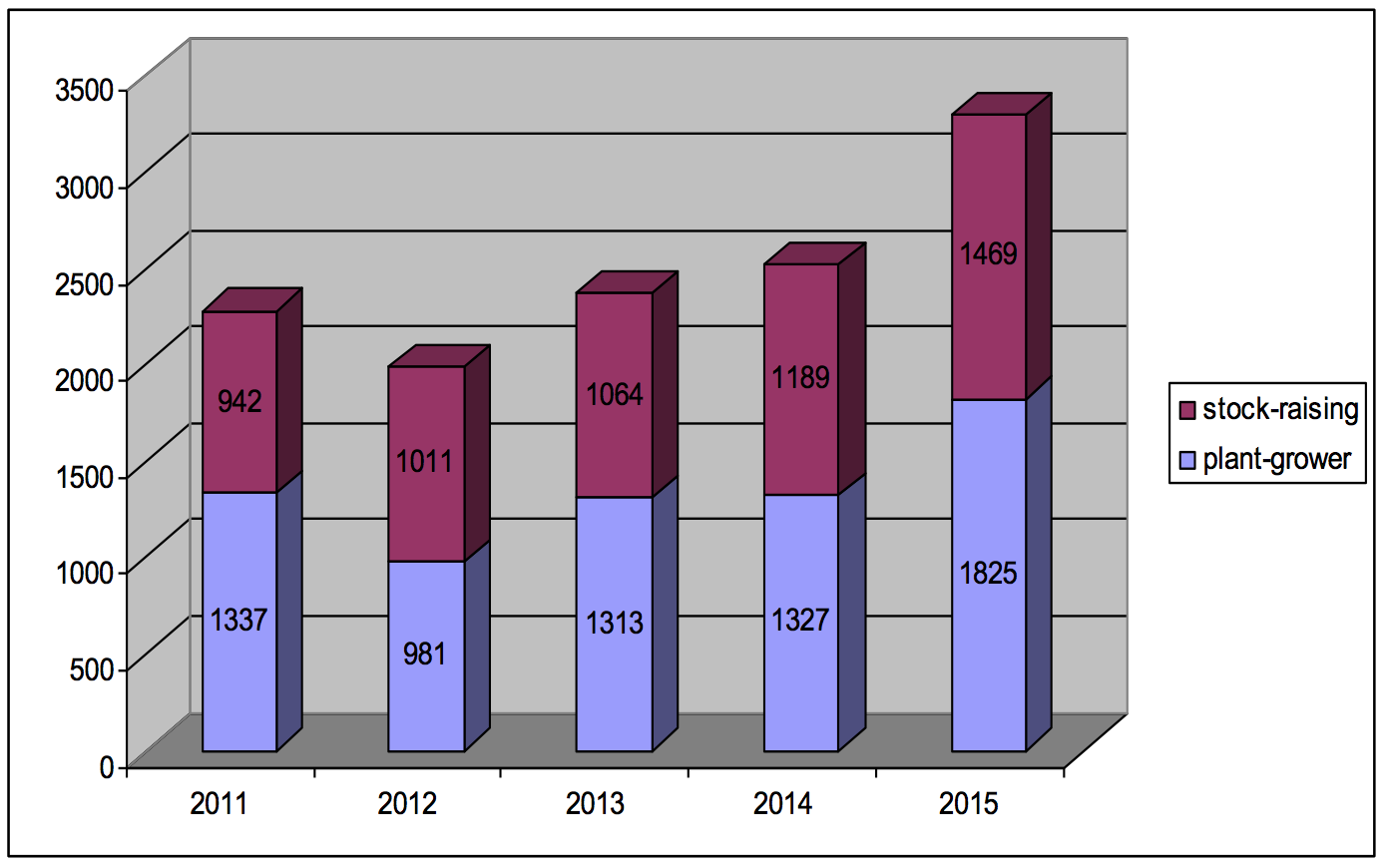
Diagram 3. Dynamics of gross agricultural production, billion tenge
The bulk of the gross domestic product of the industry is produced by personal subsidiary plots. 20% of this mass is processed products, which has a weak competitiveness, the rest is sold directly in the form of raw materials.
The annual average of the population needs for agrarian products is much lower than the level of production. The total volume of production in 2015 amounted to 1.1 trillion. tenge, in comparison this indicator is higher than the level of the indicator of 2011 by 12.5%. A large share in the gross domestic product of agriculture is occupied by the grain processing industry (22.3%), followed by dairy (16.7%), bakery (15%), meat processing (13.6%), fat and oil (7.9%), fruit and vegetable ( 7.6%), and other industries (16.9%).

Diagram 4. Production of foods of processing of agricultural produce monetary in 2015, mln. tenge
The volume of foreign trade in agricultural products, including the raw materials and food industry of the country, in 2015 amounted to 3.2 billion US dollars, accounting for 84% of the volume in 2011 (3.8 billion US dollars). The volume of exported agricultural products decreased by 6.5% (from 1.0 to 0.9 billion US dollars). However, the volume of imports of agricultural products in 2015 amounted to 2.3 billion US dollars, this figure decreased by 21.6% compared to the 2011 indicator. A high share of imports is maintained by the most high-tech industries. The average of the five-year period for processed livestock products, the largest part is cheese and curd (51%), sausages (46%), meat and canned meat (40%), and butter (36.4%).Import of sugar occupies a leading place in the processing of crop products, the share of which is (42%). At the same time, the capacity of processing plants is slightly less than 40%. 98.7 thousand tons or 84% of the exported canned products, namely canned fruits and vegetables, but the workload of plants for processing fruits and vegetables is slightly more than 25%. The capacity of factories for the production of fat-and-oil products is 45-50%. Also for 30-40% is the import of this product. In general, passive use of the capacities of enterprises directly depends on the quality of raw materials. Is the most acute in the processing industry. The needs of the population in cereals and flour are fully satisfied with domestic production.
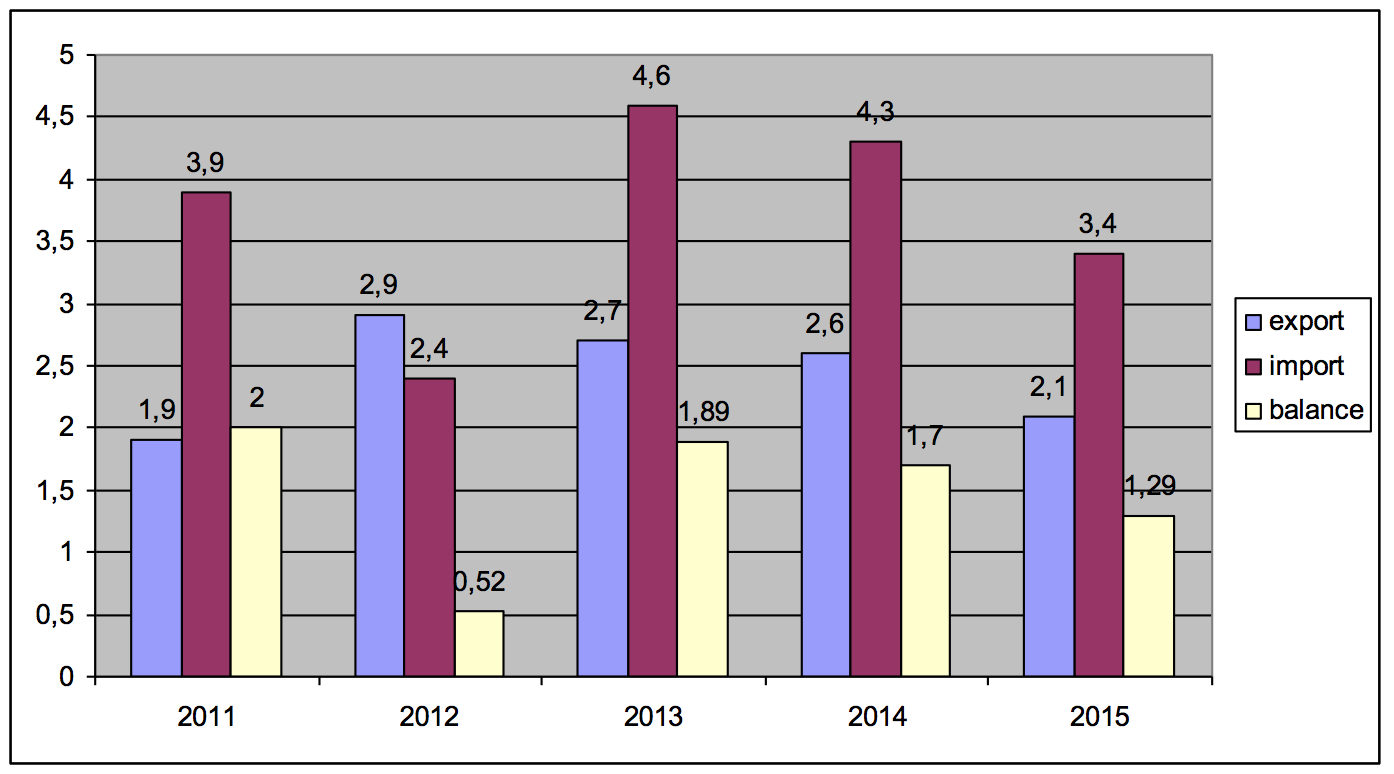
Diagram 5. Export, import and balance of production of agrarian and industrial complex, billion US dollars
Enterprises processing potatoes produce a volume that is 1/4 of the possible 100%. Annually about 70 thousand tons of fresh, chilled and frozen fish get to the market from domestic producers. In turn, the share of imports in this segment is 75% of foreign products. Fish processing enterprises perform a volume of 64 thousand tons per year. Thus they use their potential only by 43%. A significant volume of fish processing products is produced in Atyrau and Kyzolorda regions. The production of fish in 2015 was 24.7 thousand tons. Finished and canned 9.4 thousand tons. For the amount of 52.6 million US dollars, 24.9 thousand tons of fish products were delivered to foreign markets. In turn, 52.2 thousand tons of products for the total amount of 61.5 million US dollars arrived to the domestic market.
The analysis shows a very interesting feature of the essence, which is that the domestic food market has a significant share of imported products. The peculiarity is that this product has been traditionally produced on the territory of our country for a long time - vegetable and butter, sausages and sugar, cheeses and cottage cheese, fruit and vegetable and meat canned food. At the same time, the main problem in this sector can be considered a low share of processing of agricultural products and inefficiency of domestic enterprises.
In connection with which, in recent years much attention has been paid to the introduction of innovative approaches in the agricultural sector.
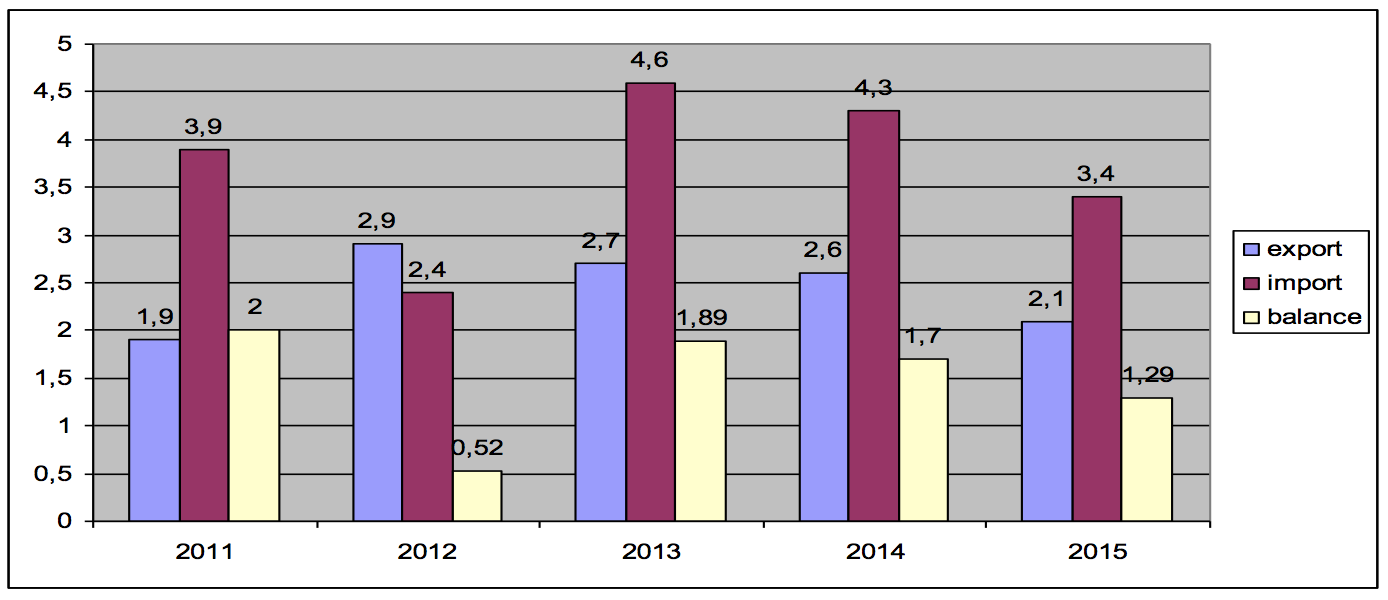
Diagram 6. Production and sales of processed products in 2015, in %.
The analysis made it possible to see the whole picture of the development of agriculture and to find problematic issues that hamper the development of the agro-industrial complex of the Republic of Kazakhstan.
Based on the results of the current study of the current state of the industry, the following positive trends in the development of agriculture in Kazakhstan are noted.
The volume of gross agricultural production in comparison with 2012 (1,999 billion tenge) increased in nominal terms by 65.4% and amounted to 3,307.0 billion tenge for the year 2015. This growth was achieved due to an increase in the output of crop production by 86% (1,825.2 billion tenge) and livestock products by 45% (1 469.9 billion tenge).
The production of food products increased by 29.7% and amounted to more than 1 trillion. tenge. The inflow of investments into fixed capital of agriculture increased by 22.4% and amounted to 163.9 billion tenge. The volume of investments in fixed assets in the production of food products increased by 44.2% and amounted to 53.6 billion tenge. The import of agricultural products fell by 22.2%.
Labor productivity per employed in agriculture for the year of 2015 was KZT 1,239.8 thousand with an annual plan of 720,000 tenge.
In crop production, it is necessary to note the results of structural and technological diversification, if in 2011 (the year preceding the beginning of diversification) the crop area under wheat was almost 66% (13.8 million hectares), in 2016 these areas were reduced to 57% (12, 4 million hectares) or 1.4 million hectares.
The gross grain harvest in 2016 amounted to 23.7 million tons in the bunker weight, which is 3.4 million tons or 16.7% more compared to the previous year. This is one of the record harvests in the history of independent Kazakhstan. The average yield was 15.4 c / ha.
In animal husbandry, it is necessary to note the tendency of a decrease in the share of livestock of farm animals in personal farmsteads and, conversely, the rapid growth of the share and number of livestock in agro-formations.
Thus, in 2015, the share of cattle in organized farms was 37%, respectively in own private farms - 63%. For comparison, at the beginning of 2010, the average share of livestock in organized farms in the republic was 18%, respectively, in private farms - 82%.
The number of cattle and poultry of all species (excluding pigs) in 2015 increased by an average of 9% compared to 2012. In the meantime, At the same time, the number of cattle increased from 5.7 million head to 6.2 million head, sheep and goats from 17.6 million head to 18 million head, horses from 1.6 million to 2.0 million. heads, a camel from 164,8 thousand heads to 170,5 thousand heads, birds from 33,5 million heads to 35,6 million heads.
The growth in production volumes for all types of livestock products averaged 14%. At the same time, there was an increase in the production of meat in slaughter weight - from 844,7 thousand tons to 931,0 thousand tons, milk - from 4,851.6 thousand tons, 5 182.4 thousand tons, eggs - from 3,673 , 5 million pieces to 4,736.9 million units.
The domestic market provides more than 80% of the domestic market with the help of domestic production (with the exception of: meat products - 67%, butter - 64%, vegetable oil - 62%, cheeses and cottage cheese - 58%, sausages - 55% poultry meat - 46%, apples - 48.4%, fish - 33%, canned vegetables - 26%, canned fruit - 4%, sugar - 3%).
Within the framework of the Eurasian Economic Union and the lists of standards for them in the field of technical regulation of agriculture, 12 technical regulations were adopted. Also to the supplement there will be developed 4 more regulations for the main types of agricultural products. The peculiarity of these regulations is to ensure the safety of agricultural products. However, according to experts' forecasts, there are fears of producing low-quality products.
One of the main reasons is not an improved system of production and promotion of agrarian products from producers to points of sale, including processing plants of agricultural raw materials. This is accompanied by the role of intermediaries, which has recently strengthened its importance. The low level of the initial price from commodity producers does not in any way stimulate the increase in the volume of productivity of the agrarian production enterprise, thereby leading to incomplete workload of the enterprise and a significant share of agricultural imports in the domestic market. The reason why domestic products can not stand competition is in competitiveness with foreign goods.The underlying factors of this problem are the shortage of funds from small and medium-sized producers, the lack of highly qualified specialists, high costs for meeting sanitation requirements, and high rates for tax deductions. The proposal to integrate small and medium-sized agricultural enterprises is the most appropriate one to eliminate difficulties in this sector. Until the adoption of the law of the Republic of Kazakhstan "On Agricultural Cooperatives" in October 2015, there were two types of state support for the development of rural cooperatives. One of the models of support is concessional lending at 5% for 5-7 years of the joint stock company Agrarian Credit Corporation. The second model is considered to be assistance in creating service-procurement centers by the joint-stock company "Socio-entrepreneurial corporation". Support data is provided through the Ministry of Agriculture of the Republic of Kazakhstan and through regional joint-stock companies, respectively. Having at the moment problems in the rural sector, we can conclude that the industry currently does not sufficiently use the mechanisms of state support.
Buzdalov, I. (2017). Structural distortions in Russian agriculture: causes and consequences. "Journal Agroindustrial complex: economy and management", 2, 4-15.
Gyyazov, A.T. (2016). The main directions of sustainable development of agricultural enterprises of the Kyrgyz Republic. Journal “Thought”, 8-1, 157-161.
Karkh, D.A., Gayanova, V.M. and Aymel, F. (2015). Priority directions of increasing the efficiency of the regional food complex. Economy of region, 2, 260-271.
Kasiyakhmedov, G.M., Kaziakhmedova, D.G., Tatarinov, A.V., Shishkov, G.B. and Timushev, A.A. (2015). Increase of stability of food safety of Russia in the conditions of globalization of the world economy (on an example of the Moscow region): monograph. Moscow: UNITY DANA.
Kozyreva, A.M. (2010). Formation and organization of management in the agro-industrial financial group (on the example of flax enterprises of the Yaroslavl region): monograph. Yaroslavl: YarSU.
Kulanova, D.A. and Arebaeva, A.N. (2016). Food security: actualization and the current situation. Bulletin of the University of Turan, 2(70), 81-87.
Narynbaeva, A.S and Mels, A.A. (2016). Unification of the methods of state regulation of the agro-industrial complex in the conditions of the EAEC. Problems of the agro market, 4, 5-8.
Rakhimzhanova, A.Zh. (2011). The state and problems of the development of the agroindustrial complex of Kazakhstan. Journal "Analytic", 2, 68-71.
Roshka, T.B., Kulakova, L.N. and Korol, A.G. (2014). Problems of functioning and perspectives of development of peasant (farmer) farms in the agroindustrial complex of the Republic of Belarus. Journal “The young scientist”, 5 (64), 307-311.
Samygin, D.Yu., Baryshnikova, N.G. and Mizyurkina, L.A. (2017). The project model of the development of the agrarian economy: the food aspect. Journal "Economy of the region", 2, 591-603.
Saparbayev, A. (2017). Modeling logistic flows in the transport of cereals. Journal “Austria-science”, 2, 126-130.
Slepneva, L.R. and Novakovskaya, O.A. (2006). Integration processes in the agro-industrial complex of Russia in modern conditions: Monograph. Ulan-Ude: Publishing house of the All-Russian State Technical University.
Sаlakhutdinova, R.R. (2016). The issue of crafts development in rural areas. Journal “Scientific Discussion”, 2(2), 104-106.
Temirbekova, A.B. (2016). The competitiveness of Kazakhstan’s agriculture in the conditions of integration into the EaEU. KazNu Bulletin. Economy series, 6(118), 16-24.
Temirbekova, A.T. and Uskelenova, A.T. (2012). Innovative forms of state support for the agro-industrial complex. Transit economy, 4(92), 89-95.
Ulezko, A.V. and Babin, D.I. (2016). Development of the resource base of the regional food market: monograph. Voronezh: FSBEI HE Voronezh State University.
1. L.N. Gumilyov Eurasian National University, Astana, Kazakhstan.
2. L.N. Gumilyov Eurasian National University, Astana, Kazakhstan.
3. L.N. Gumilyov Eurasian National University, Astana, Kazakhstan.
4. L.N. Gumilyov Eurasian National University, Astana, Kazakhstan.
5. Narxoz University, Almaty, Kazakhstan.
6. Kokshetau State University, Kokshetau, Kazakhstan.
7. Kokshetau State University, Kokshetau, Kazakhstan.